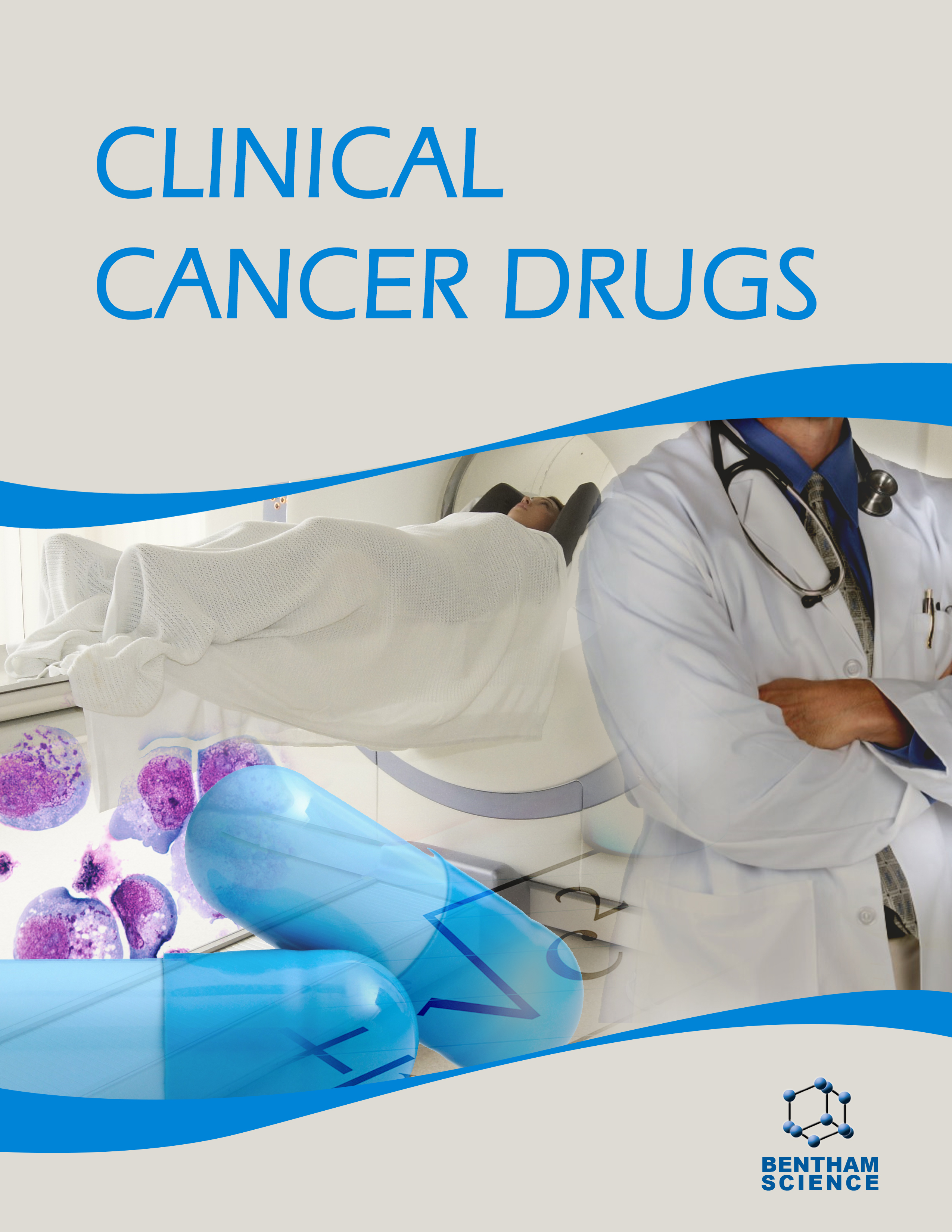- Home
- A-Z Publications
- Clinical Cancer Drugs
- Previous Issues
- Volume 9, Issue 1, 2022
Clinical Cancer Drugs - Volume 9, Issue 1, 2022
Volume 9, Issue 1, 2022
-
-
Differential Proliferative and Cytotoxic Effect of Selected Components of Essential Oils on Human Glioblastoma Cells
More LessAuthors: Sumbla Sheikh, Alexander Sturzu, Hubert Kalbacher, Thomas Nägele, Ulrike Ernemann and Stefan HecklBackground: In the study of bioactive agents from traditional medicine, mono- and sesquiterpenes represent the main ingredients of essential oils. Till now, only thymoquinone and perillyl alcohol have been clinically tested on glioblastoma. Objective: In the present study, we examined the effect of ten different essential oils on three human glioblastoma cell lines and one healthy human cell line. Methods: We used confocal laser scanning microscopy, flow cytometry, and cell growth analysis to evaluate cell morphology changes, membrane disruption effects, acute cytotoxicity and effects on the proliferation rate caused by the essential oils pinene, geraniol, eucalyptol, perillaldehyde, limonene, and linalool, perillyl alcohol, myrcene, bisabolol and valencene on human cells. Caspase 3/7 activity was measured to observe apoptosis induced by the essential oils. Results: We found that the cytotoxicity concentrations varied not only between different essential oils but also among different cell lines. Acute cytotoxicity of essential oils was based on cell membrane disruption and that HEK cells were affected to a much higher degree than the Glioblastoma cells. Vacuoles found in surviving glioblastoma cells appeared to be a factor in this effect. Conclusion: Caspase activity did not correlate with the membrane damage observed in the flow cytometry experiments. This is especially evident in the HEK cells that only showed apoptosis with two out of ten essential oils. Comparison of the effects of other essential oil to perillyl alcohol, which is already used in glioblastoma therapy, revealed perillaldehyde and valencene as two new candidate substances that showed even stronger anti-glioblastoma effects in all experiments.
-
-
-
Neurotoxicity of Cisplatin as Monotherapy or Combined Chemotherapy in Cancer Treatment
More LessAuthors: André N. Volpini, Igor José de Souza Marques and Iago D. L. CavalcantiIntroduction: The main toxicity of cisplatin is nephrotoxicity, but more and more studies have highlighted and unveiled the mechanisms of cisplatin toxicity, and the neurotoxicity has been standing out. Objective: We aimed to bring together the main studies that highlight the neurotoxicity of cisplatin in the treatment of cancer patients. Methods: We performed a literature review using the keywords “Neurotoxicity”, “Cisplatin”, “Oncology Therapy”, and “Chemotherapy” in the SciELO, PubMed, Sciencedirect, MEDLINE, Scifinder, and CAplus databases. Results: We selected 60 articles published between 1983 and 2021 that report the mechanisms of cisplatin toxicity or which provide clinical data on the neurotoxicity profile of cisplatin as monotherapy and as a combination therapy, highlighting that one of the main neurotoxicity of cisplatin is in the development of peripheral neuropathy. Conclusion: Cisplatin is neurotoxic and can induce the development of peripheral neuropathy and the combination with neurotoxic drugs such as paclitaxel and vincristine only contributes to the increase in neurological toxicity. Thus, we emphasize the importance of evaluating the neurotoxicity of cisplatin, especially in patients who use protocols that contain other antineoplastic agents that are also neurotoxic.
-
Most Read This Month


